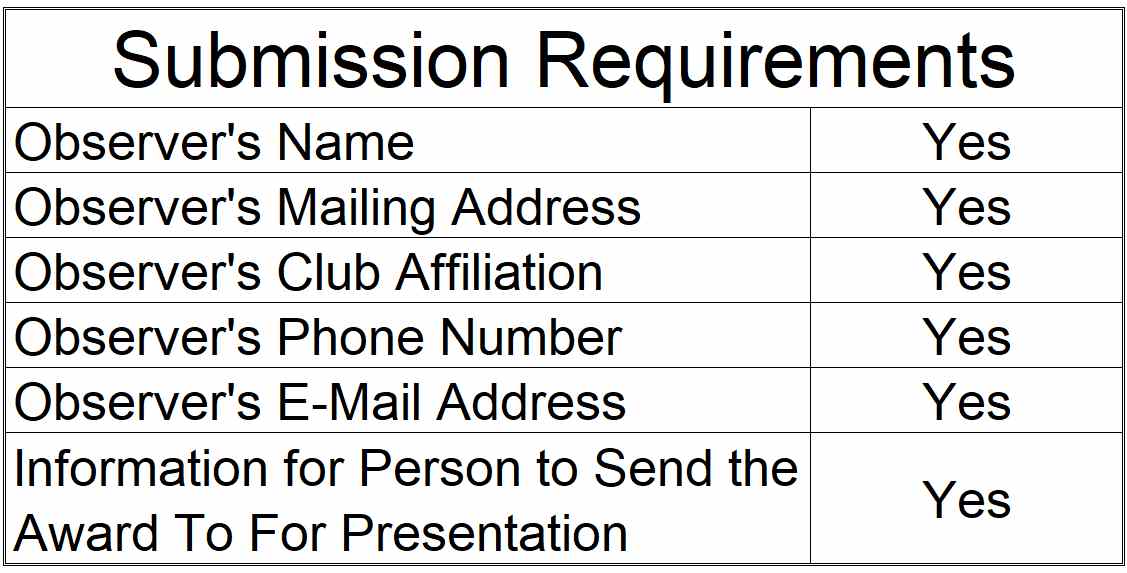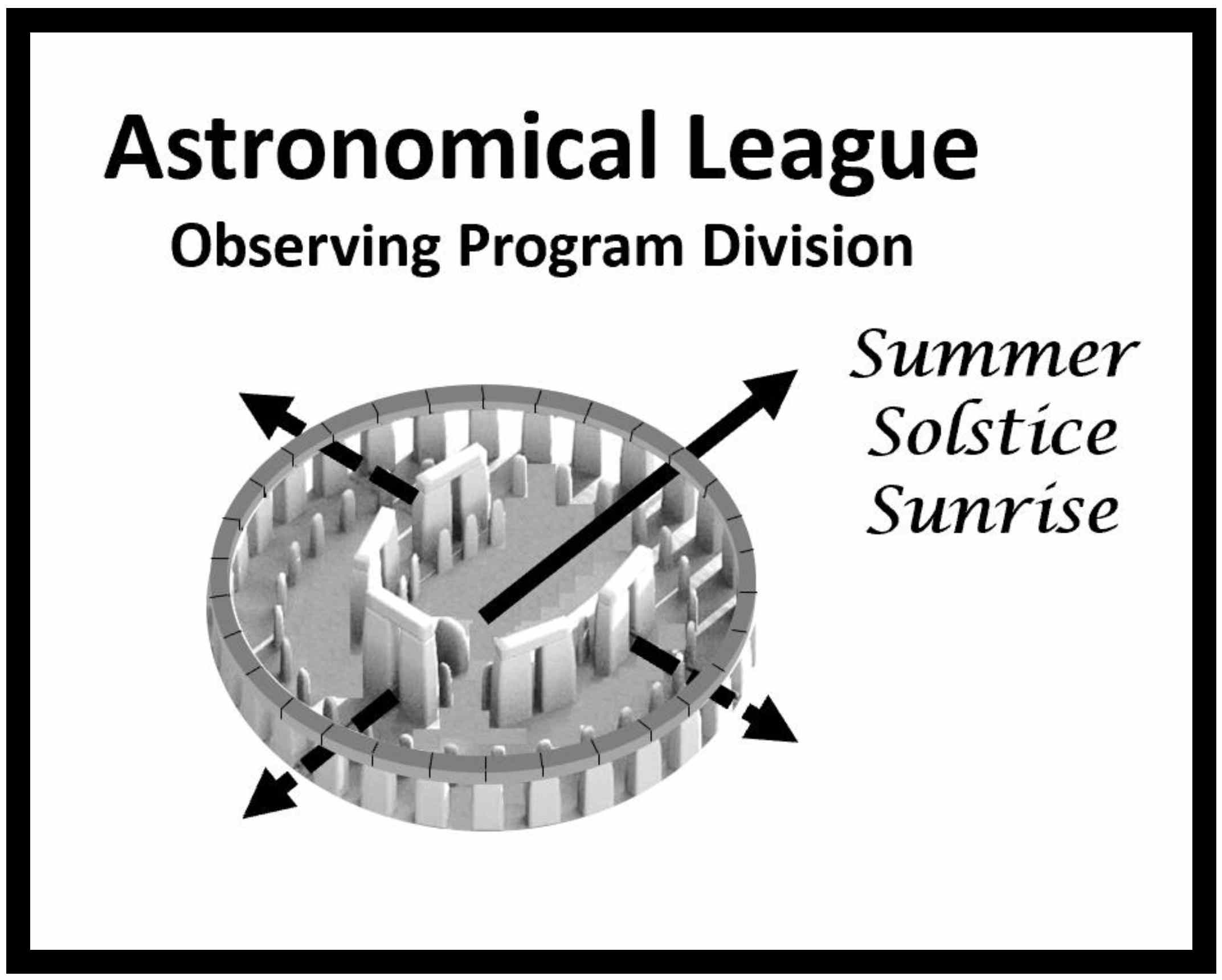AL Observing Challenge and Special Award Coordinator:Cliff Mygatt |
|
IntroductionThe Astronomical League has identified opportunities to commemorate special astronomical events and bring you AL Observing Challenges. New opportunities will be added as significant celestial events are identified. |
Requirements and RulesTo earn the certification, you need to meet these requirements:
You do not need to be a member of the Astronomical League to receive the first level of this certification, but it is required for the second level. If you are not a member and would like to become one, check with your local astronomical society, search for a local society on the Astronomical League Website, or join as a Member-At-Large in the member at large . |
 |
The AL Observing Challenges
Current Challenges:
10. T Coronae Borealis Observing Challenge and Special Observing Award. (deadline for submission will be one month after the eruption) As of 11/25/2025 – we are still waiting!
Effective immediately, the Astronomical League is bringing you another Observing Challenge. This one is for the pending eruption of the Nova T Coronae Borealis. it is expected to happen some time between now and September. There will be two levels of this award, both will include certificates and Level 2 will include a pin.
Levels and their requirements:
Level 1 – AL Observing Challenge. (certificate only)
- This level may be done by anyone, even non-members of the Astronomical League.
- This may be done visually through a telescope or through imaging.
- Two observations are required:
- Observe T Coronae Borealis before the eruption (now).
- Observe T Coronae Borealis during the Nova stage.
- An Outreach Activity is also required, to share this event with the public.
Level 2 – AL Special Observing Award. (certificate and pin)
- This level requires membership in the Astronomical League.
- The brightness data (measurements from your observations) must also be submitted to the American Association of Variable Star Observers.
- Their website: https://www.aavso.org/
- You must have an account and an ID with AAVSO to submit. You do NOT have to join AAVSO to submit.
- This is much more valuable (and accurate) if you are doing this through imaging.
- We encourage you you to also use a photometric “V” filter if possible.
- All instructions and information on submitting data is on the AAVSO website. They have manuals to help you with the process (https://www.aavso.org/observing-manuals.):
- Visual observers should use the “Manual for Visual Observing of Variable Stars”
- Monochrome CCD/CMOS images should read the “Guide to CCD/CMOS Photometry with Monochrome Cameras” and
- Folks with color cameras, including DSLRs should go to the “DSLR Observing Manual”.
- You should make the first observation as soon as you can, before T Coronae Borealis erupts, even if you are not yet set up to submit data to the AAVSO. The important piece is to collect the data now.
- This is the same process that is used in the Astronomical League’s Variable Star and Nova Observing Programs.
15. 3I – Atlas Observing Challenge. (deadline for submission is January 31, 2026)
At this time, astronomers have observed three interstellar interlopers traversing our solar system. The third one is 3I – Atlas. This observing challenge is to celebrate these visitors from afar. This visitor will make its closest approach to Earth on December 19, 2025.
Requirements for this Observing Challenge:
- Do an Outreach Activity related to the Interstllar visitors.
- Observe 3I-Atlas using a telescope. Observations should be done closest to the date of its closest approach to Earth.
- Sketch or image the event.
- Identify 3I – atlas in the sketch or image.
- Include information on your telescope and camera (if used).
- Forward the sketch or image, plus the information on the outreach activity to the AL Observing Challenge Coordinator. Submission deadline is January 31, 2026.
Information Required:
- Your name, eMail address, Postal Address, and Phone Number
- Your Astronomy Club affiliation (or Member at Large) if you are part of the Astronomical League
- Sketch or Image
- Equipment used (Telescope, Camera)
- Date and Time of your observation
- Latitudes and Longitudes of the Observation
- Information about the Outreach Activity
Past Challenges:
1. The Great Conjunction Observing Challenge (deadline for submission was February 21, 2021)
2. Observing The Moon Observing Challenge – 2021 (deadline for submission was October 16, 2021)
3. The AL 75th Year Anniversary Observing Challenge (deadline for submission was December 31, 2021)
4. Astronomical League Galaxy Season Observing Challenge (deadline for submission was June 30, 2022)
5. Astronomical League Globular Cluster Observing Challenge (deadline for submission: October 31, 2022)
6. Observing the Moon Observing Challenge – 2022 (deadline for submission: November 9, 2022)
7. Astronomical League – Moons Observing Challenge (deadline for submission: December 31, 2022)
8. Astronomical League – Galaxy Challenge 2.0 (deadline for submission: July 25, 2023)
9. Astronomical League Moon Observing Challenge – 2023 (deadline for submission: November 21, 2023.)
10. Astronomical League T Corona Borealis Challenge (still in progress)
11. Astronomical League Solar Maximum Observing Challenge (deadline for submission: April 30, 2025.)
12. Astronomical League Moon Observing Challenge – 2024 (deadline for submission: October 14, 2024.)
13. Astronomical League Moon Observing Challenge (deadline for submission: November 11, 2025.)
14. Huygen’s TOES Observing Challenge (deadline for submission: November 6, 2025.)
15. 3I – Atlas Observing Challenge (deadline for submission: January 31, 2026.)
For details on the requirements for prior awards, click here.
AL Observing Challenges and Special Awards Coordinator:Cliff Mygatt |




